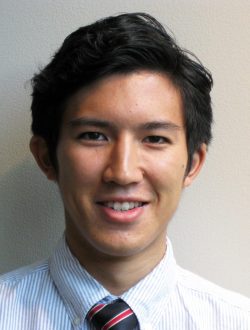Biography
Atom O. Watanabe (IEEE Member) received his B.Eng. degree in applied physics from Keio University, Tokyo, Japan, in 2015, and M.S. and Ph.D. degrees in electrical and computer engineering from the Georgia Institute of Technology, Atlanta, GA, USA, in 2019 and 2020, respectively. From 2015 to 2020, he was with the 3D Systems Packaging Research Center, Georgia Institute of Technology, under the guidance of Profs. Rao R. Tummala and M. Swaminathan. As a Graduate Research Assistant at the RF/5G Glass Interposer Program, he was involved in design and demonstration of high-performance and ultrathin antenna-integrated 3-D glass-based millimeter-wave (mm-wave) packages. In 2020, he joined Qualcomm Inc., San Diego, CA, USA, as a packaging signal and power integrity engineer. Since 2021, he has been a Research Staff Member at IBM Thomas J. Watson Research Center in Yorktown Heights, NY. His research activities include antenna-in-package design and integration for mm-wave communication systems, 2.5D/3D chiplet and heterogeneous integration, co-packaged optics, and cryogenic packaging for quantum computing.
Presentations
The Evolution of Antenna in Package Toward a Connected Intelligent Future
Abstract:
As wireless communication systems advance toward higher frequency bands and increased data throughput, the demands on electronic packaging technologies have grown exponentially. This talk explores cutting-edge developments in electronic packaging with a focus on enabling next-generation millimeter-wave and AI-driven communication systems. We will begin by reviewing advanced packaging stack-ups and material innovations critical for high-frequency performance and thermal management. The discussion will then delve into antenna-in-package (AiP) design strategies, emphasizing the integration of antennas within complex multi-layer substrates to minimize form factor and realize high density wiring.
A comprehensive analysis of signal integrity challenges, including crosstalk mitigation techniques, will be presented along with power integrity considerations needed for low EVM. Heterogeneous integration approaches will be discussed as a key enabler for combining diverse functionalities—BFIC, FCIC, filters, capacitors—within a single module. Finally, this talk will show measurement methodologies for characterizing 28-GHz performance and explore the emerging paradigm of antennas-to-AI, where hardware design directly interfaces with AI-driven processing to optimize wireless communication and sensing systems.
